Earlier this week it was reported that Commonwealth Bank CEO Ian Narev’s total pay for the past year rose to $12.3m – an increase of 50%. Narev’s pay rise comes at a time when Australian workers are receiving the lowest growth in their wages ever recorded. Yesterday the ABS revealed that in the past year, wages in the private sector grew by just 1.9% in trend terms – marking four years of falling wages growth.
As workers sit watching the Olympics at night they probably don’t feel like record breakers, but they are. Australian wages are rising by record low amounts – both in the private and public sectors.
Total Australia wages growth, excluding bonuses, grew by just 2.1% in the past year – both in trend and seasonally adjusted terms. By either measure it was a record:
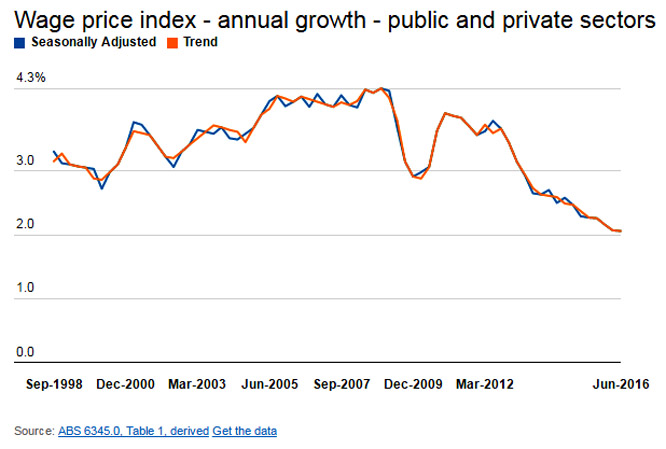
And it is a record that places some pressure on the budget figures. This year’s May budget estimated that the annual financial year wages growth for 2015-16 would be 2.25%.
While the over-estimation in the budget for last financial year shouldn’t have too big of an impact on income tax revenue (lower than expected wages growth = lower than expected income tax revenue), the budget estimated wages in 2016-17 would grow by 2.5% and by 2.75% in 2017-18.
The last time wages grew above 2.75% was in 2013, and there is very little sense that a turnaround is about to occur that would see wages growth return to those levels.
As a general rule public sector wages tend to rise faster than the private sector, but even the public sector is experiencing record low wages growth.
On the private sector side however, the picture is very grim. Annual wages growth has fallen every quarter since June 2012 – four years of wages growing ever slower:
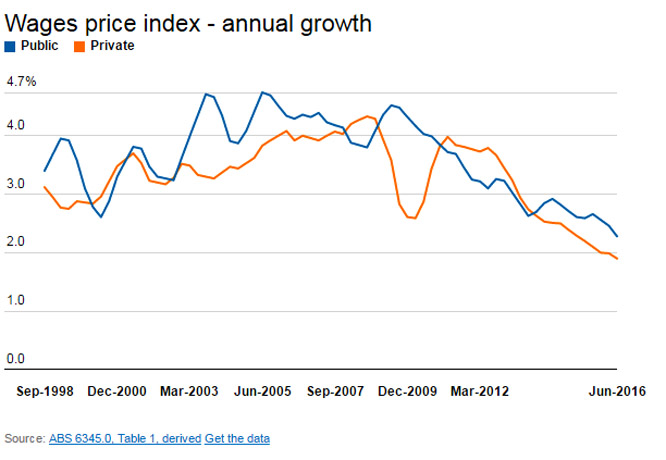
The quarterly wages growth shows no signs of life either.
In June, private sector wages grew by just 0.41% in trend terms – a low beaten only by the GFC quarter of September 2009. The difference is that back then when for one quarter private sector wages grew by just 0.39%, it was followed by growth of 0.7%; by contrast the latest weak growth figure comes off the back of five consecutive quarters of 0.5% or lower growth:
Wages price index - quarterly growth (trend)
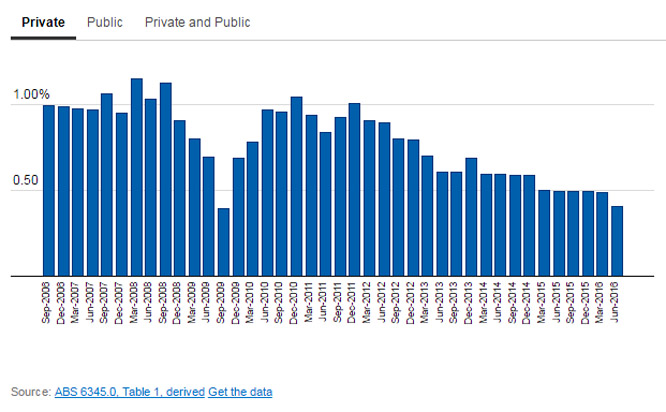
The 0.48% wages growth in the public sector is a new record.
The slowing wages growth is being felt across the nation in almost all industries.
Only in the retail trade; transport, postal and warehousing; and other services industries is annual wages growth higher now than it was a year ago. And in some industries, such as mining, and financial and insurance, the drop in wage growth has been severe – by more than half a percentage point:
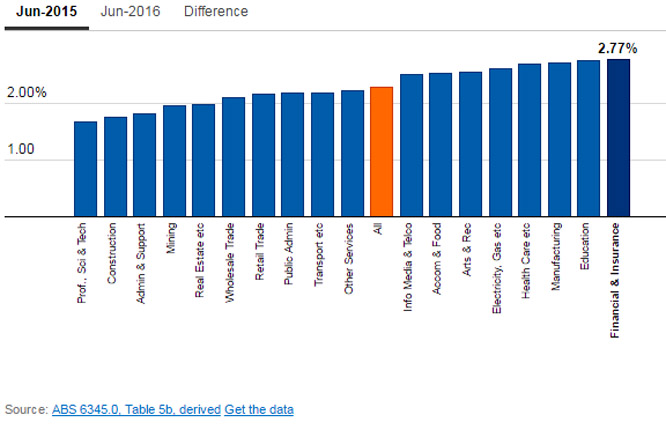
The big drop-off in wages growth in the financial and insurance industry might be a bit of a surprise given the Commonwealth Bank CEO, Ian Narev’s $4m-plus pay rise.
Of course wage rises across industries don’t have a lot to do with actual pay rates. There is not a lot of correlation between wage rises and average earnings – both mining and the finance and insurance industries remain at the top end of the earnings scale:
But while Narev’s pay rise is large, mostly it comes via bonuses with his fixed pay unchanged at $2.65m.
The wages price index does not include bonuses in the overall figure, as they are considered less reflective of the actual wage growth of most workers, but the ABS does measure the growth of total pay including bonuses.
However even here Narev is very much the exception. While total pay including bonuses can sometime grow faster than “base wages”, in the last quarter, pay including bonuses did not grow at all.
It meant that in the past 12 months, regardless of which measure used, wages grew by record lows – and at just 1.8%, wages growth including bonuses actually grew by less than the base amount:
Wages price index - private sector annual growth
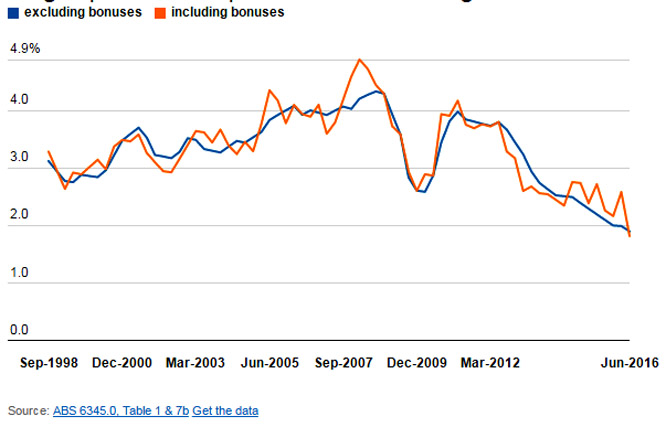
The ongoing poor wages growth means that real wages continue to stagnate when measured against inflation. As noted last week, real wages growth is better when measured against the employee cost of living index – due to falling interest rates assisting those with mortgages:
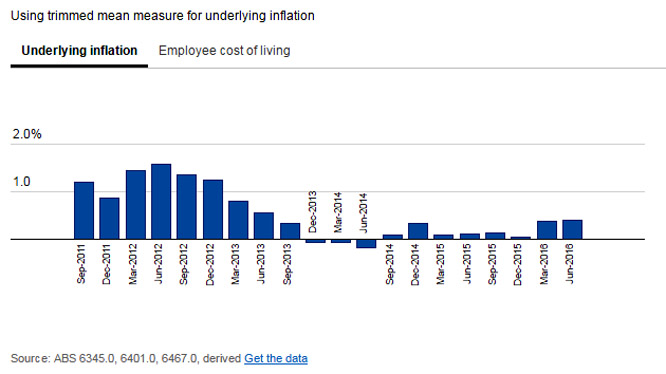
But for those without mortgages and those who have not gained the benefits of lower prices of some items within the inflation basket, the picture of real wages growth is pretty bleak.
Over the past three years, real wages have grown just 0.3% using the underlying inflation measure of the “trimmed mean”.
Given changes to welfare payment thresholds and some rises in nominal pay which takes people into higher levels of taxation and above certain cut-offs for welfare payments, this means that on average people’s standard of living would have decreased in that time.
Falling mortgage rates have certainly assisted many households, but with continuing weak wages growth, the benefits flowing through into overall standard of living appears negligible.
And those benefits from lower mortgage repayment are of course dependent upon banks passing on the rate cuts made by the Reserve Bank.
It is thus likely to be a more than a little jarring for workers experiencing barely any rise in their income, to recall that the man who just received a 50% pay rise also decided not to pass on the full 25 basis points cut in interest rates to customers.
No doubt he’ll explain that decision in front of a parliamentary committee at some point, but I suspect he has $12.3m reasons to not worry too much about it.
Australia should compare CEO and average worker pay as the US and UK do